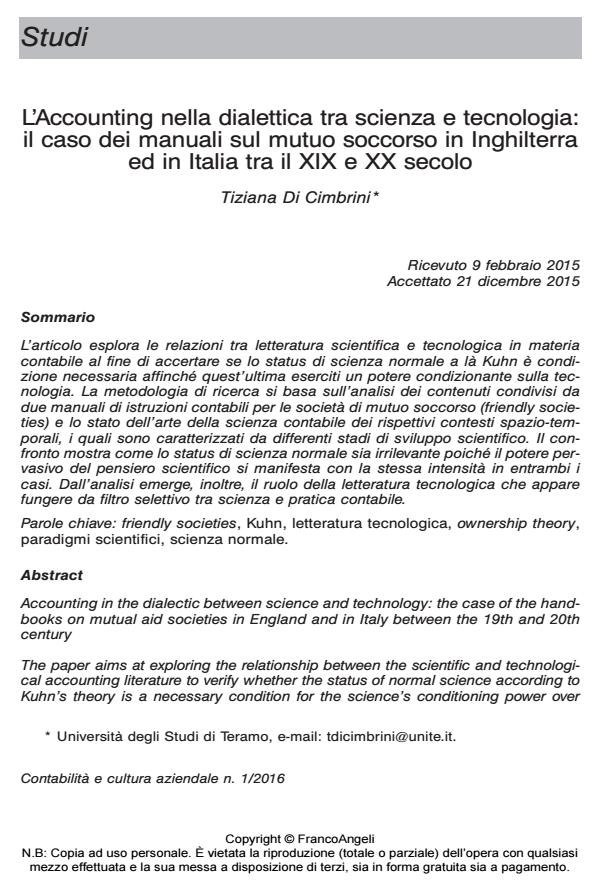L’Accounting nella dialettica tra scienza e tecnologia: il caso dei manuali sul mutuo soccorso in Inghilterra ed in Italia tra il XIX e XX secolo
Journal title CONTABILITÀ E CULTURA AZIENDALE
Author/s Tiziana Di Cimbrini
Publishing Year 2016 Issue 2016/1
Language Italian Pages 30 P. 11-40 File size 528 KB
DOI 10.3280/CCA2016-001003
DOI is like a bar code for intellectual property: to have more infomation
click here
Below, you can see the article first page
If you want to buy this article in PDF format, you can do it, following the instructions to buy download credits

FrancoAngeli is member of Publishers International Linking Association, Inc (PILA), a not-for-profit association which run the CrossRef service enabling links to and from online scholarly content.
In the context of German financial reporting theories of the first half of the twentieth century, this paper examines the role and influence of the two most important German dualists (Fritz Schmidt and Karl Sewering) on the International Accounting Standards The present research has exploratory nature and aims at reconstructing the main purposes, the theoretical-practical approach and the main impacts on the Accounting studies (in particular on the concept of capital maintenance) at the international level of these authors . The aims of the study are pursued through a deductive methodological approach, based on a survey of historiographical nature documentary. Our findings indicate some elements, which require further investigation to lead to certain conclusions, in support of the thesis that the commissions which drafted the fourth EU directive, and the IASB Framework have been made use of the ideas and proposals of the German dualists with particular reference to the preservation of capital, albeit indirectly. In the conclusions, we outline the main limitations of this study and its possible developments.
Keywords: Schmidt, Sewering, dualistic theories, capital maintenance, Germany
- The Transition in Accounting Paradigms from the Tuscan School to the Venetian School in Italy: A Study of the Contribution of Vincenzo Gitti under the Kuhnian Epistemological Model Antonio Prencipe, in Accounting Historians Journal /2025 pp.75
DOI: 10.2308/AAHJ-2021-001
Tiziana Di Cimbrini, L’Accounting nella dialettica tra scienza e tecnologia: il caso dei manuali sul mutuo soccorso in Inghilterra ed in Italia tra il XIX e XX secolo in "CONTABILITÀ E CULTURA AZIENDALE" 1/2016, pp 11-40, DOI: 10.3280/CCA2016-001003